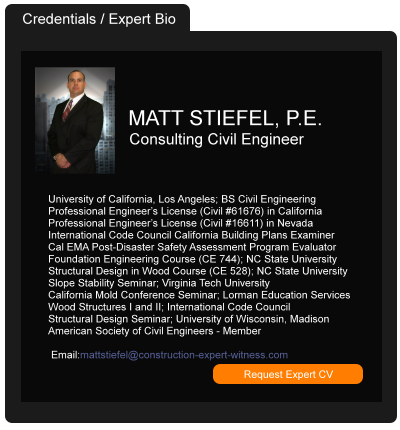Include Contract Clauses for Protection Against Ever-Evolving Construction Challenges
May 30, 2022 —
Michael Henry & Kevin J. Riexinger - Construction ExecutiveThe first quarter of 2022 provided a valuable glimpse into some of the major issues the construction industry can expect to continue impacting jobsites for the rest of the year.
Early in the pandemic, construction was not immune from the shut-downs that swept across market sectors. Workers were staying home to shield themselves and their families from the COVID-19 virus (and variants). This caused delays with construction projects and failures to meet negotiated benchmarks or deadlines. Contractors were left to wonder whether they remained obligated to perform under their contracts, or whether COVID-19 allowed them to invoke force majeure clauses. Over the past two years, there has been much debate about whether force majeure clauses encompass COVID-19 risks.
Traditionally, force majeure is only invoked for significant weather events or natural disasters. Unsurprisingly, outcomes of legal actions regarding COVID-19 and force majeure varied by state and by contract. It didn’t take long for contractors to seek a more predictable and certain solution.
Reprinted courtesy of
Michael Henry & Kevin J. Riexinger, Construction Executive, a publication of Associated Builders and Contractors. All rights reserved.
Mr. Riexinger may be contacted at kriexinger@gllawgroup.com
Mr. Henry may be contacted at MbHenry@tcco.com
Read the court decisionRead the full story...Reprinted courtesy of
California Supreme Court Rejects Third Exception to Privette Doctrine
July 03, 2022 —
Lewis BrisboisWalnut Creek, Calif. (May 25, 2022) - In Gonzalez v. Mathis (August 19, 2021) 12 Cal. 5th 29, the California Supreme Court considered whether to create a third exception to the Privette Doctrine specific to known hazards on a worksite, when a contractor cannot remedy the hazard by taking reasonable safety precautions to protect against it.
Privette Background
Under the Privette Doctrine, the hirer of an independent contractor generally cannot be liable for injuries sustained by the independent contractor or its employees while on the job. This is due to the “strong presumption” that the hirer delegates all responsibility for workplace safety to the independent contractor. See Privette v. Superior Court (1993) 5 Cal. 4th 689. Since the Privette ruling in 1993, the California Supreme Court has identified two circumstances in which the presumption may be overcome. First, the hirer may be liable when it retains control over any part of the independent contractor’s work and negligently exercises that retained control in a manner that affirmatively contributes to the injury. Hooker v. Dept. of Transportation (2002) 27 Cal. 4th 198, 213. Second, a landowner who hires an independent contractor may be liable if the landowner knew, or should have known, of a concealed hazard to the property that the contractor did not know of and could not have reasonably discovered, and the landowner failed to warn the contractor of the hazard. Kinsman v. Unocal Corp. (2005) 37 Cal. 4th 659, 664. Here, in the Gonzalez case, the court considered whether a landowner could be liable for known hazards on the property.
Read the court decisionRead the full story...Reprinted courtesy of
Lewis Brisbois
Boston Developer Sues Contractor Alleging Delays That Cost Millions
November 01, 2021 —
James Leggate - Engineering News-RecordA Miami developer is suing the general contractor it hired to build a 22-story mixed-use tower in Boston’s trendy Seaport District, alleging construction delays cost it $4.9 million in lost revenue.
Reprinted courtesy of
James Leggate, Engineering News-Record
Mr. Leggate may be contacted at leggatej@enr.com
Read the full story... Read the court decisionRead the full story...Reprinted courtesy of
The 411 on the New 415 Location of the Golden State Warriors
June 10, 2015 —
Garret Murai – California Construction Law BlogYou can feel the buzz here in the Bay Area as the Golden State Warriors enter Game 4 of the NBA Playoffs following a 35 point upset over the Houston Rockets on Saturday, and a chance tonight to sweep the series and head to the NBA Finals for the first time since 1975.
Formerly the Philadelphia Warriors from 1946 to 1962, and later the San Francisco Warriors from 1962 to 1971, the Golden State Warriors have played in Oakland’s currently named Oracle Arena since 1966 (except for one year when they played in San Jose while the Oracle Arena was being remodeled).
Starting next year, however, construction will begin on the Warriors’ new stadium in the Mission Bay area of San Francisco with completion scheduled for the 2018-2019 season. Although details are just emerging – and even the conceptual plans have changed after some said that the initial design looked like a toilet – here’s the 411 we know on the new 415 location of the Warriors:
- The cost of the new arena is estimated to be $1 billion.
Read the court decisionRead the full story...Reprinted courtesy of
Garret Murai, Wendel Rosen Black & Dean LLPMr. Murai may be contacted at
gmurai@wendel.com
NYC-N.J. Gateway Rail-Tunnel Work May Start in 2023
March 28, 2022 —
Elise Young - BloombergThe $12.3 billion Gateway rail tunnel linking New York City and New Jersey has reached a major preconstruction milestone with the completion of geotechnical studies necessary for the engineering phase.
The analysis of rock and silt from 75 earth samples on both sides of the Hudson River marks the latest in a series of swift leaps toward a potential 2023 start date. The project had been delayed years by former President Donald Trump, who had argued that costs should be covered solely by the states, not U.S. taxpayers.
The samples, from depths of 48 feet to 505 feet (14.6 meters to 154 meters), will guide design, according to the Gateway Development Commission, the project’s overseer. Some areas of particular interest to the researchers were on Manhattan’s West Side, parts of which were underwater before landfill was added many years ago.
Read the court decisionRead the full story...Reprinted courtesy of
Elise Young, Bloomberg
Third Circuit Holds No Coverage for Faulty Workmanship Despite Insured’s Expectations
November 21, 2018 —
Brian Margolies - TLSS Insurance Law BlogIn its recent decision in Frederick Mut. Ins. Co. v. Hall, 2018 U.S. App. LEXIS 31666 (3d Cir. Nov. 8, 2018), the United States Court of Appeals for the Third Circuit had occasion to consider Pennsylvania’s doctrine of reasonable expectations in the context of a faulty workmanship claim.
Hallstone procured a general liability policy from Frederick Mutual to insure its masonry operations. Notably, when purchasing the policy through an insurance broker, Hallstone’s principal stated that he wanted the “maximum” “soup to nuts” coverage for his company. Hallstone was later sued by a customer for alleged defects in its masonry work. While Frederick agreed to provide a defense, it also commenced a lawsuit seeking a judicial declaration that its policy excluded coverage for faulty workmanship. The district court agreed that the business risk exclusions applied, but nevertheless found in favor of Hallstone based on the argument that Hallstone had a reasonable expectation that when applying for an insurance policy affording “soup to nuts” coverage, it this would include coverage for faulty workmanship claims.
Read the court decisionRead the full story...Reprinted courtesy of
Brian Margolies, Traub Lieberman Straus & Shrewsberry LLPMr. Margolies may be contacted at
bmargolies@tlsslaw.com
SFAA Commends U.S. Senate for Historic Bipartisan Infrastructure Bill
August 16, 2021 —
The Surety & Fidelity Association of AmericaAugust 10, 2021 (WASHINGTON, DC) –
The Surety & Fidelity Association of America (SFAA) commends the U.S. Senate for passing the historic, bipartisan Infrastructure Investment and Jobs Act. The $1.2 trillion deal will lay the foundation for extensive improvements in the nation’s roadways, bridges, railways, waterways and broadband access.
“Investing in infrastructure will create millions of jobs across the country, growing our national and local economies in both the short and long term,” said SFAA president and CEO, Lee Covington. “The surety industry fully supports this investment and will continue to provide the essential protections necessary to support our country’s infrastructure needs through our suite of products and services.”
SFAA also commends the inclusion of the Van Hollen 2354 amendment to the bill, accepted by a unanimous vote of 97-0. The amendment requires payment and performance bonds on all federally-financed infrastructure projects receiving loans and grants under the Transportation Infrastructure Finance and Innovation Act (TIFIA), protecting taxpayers’ dollars, ensuring project completion, protecting local small business contractors and workers, and promoting economic growth.
The Surety & Fidelity Association of America (SFAA) is a trade association of more than 425 insurance companies that write 98 percent of surety and fidelity bonds in the U.S. SFAA is licensed as a rating or advisory organization in all states and it has been designated by state insurance departments as a statistical agent for the reporting of fidelity and surety experience. https://www.surety.org/
Read the court decisionRead the full story...Reprinted courtesy of
More thoughts on Virginia Mechanic’s Liens
January 28, 2019 —
Christopher G. Hill - Construction Law MusingsAs we settled yet another construction case on the courthouse steps today, I began to think about what I should post to begin 2009. Of course, given the construction industry slowdown that is predicted, and the trend at construction projects around the Commonwealth of Virginia that looks to me as if payments will be harder to come by from Owners less willing, for financial reasons, to work with contractors, mechanic’s liens will be more useful, and necessary, now than ever.
Virginia mechanic’s liens are unusually strong because your memorandum of lien takes priority over all prior liens on the property that you have improved (including from the bank that is financing the project) except in very limited circumstances. What this means is that, should you properly file and sue to enforce your lien, you get to foreclose and have first crack at any money. By contrast, a judgment lien takes priority only over liens filed after the lien is recorded.
Read the court decisionRead the full story...Reprinted courtesy of
The Law Office of Christopher G. HillMr. Hill may be contacted at
chrisghill@constructionlawva.com


































































